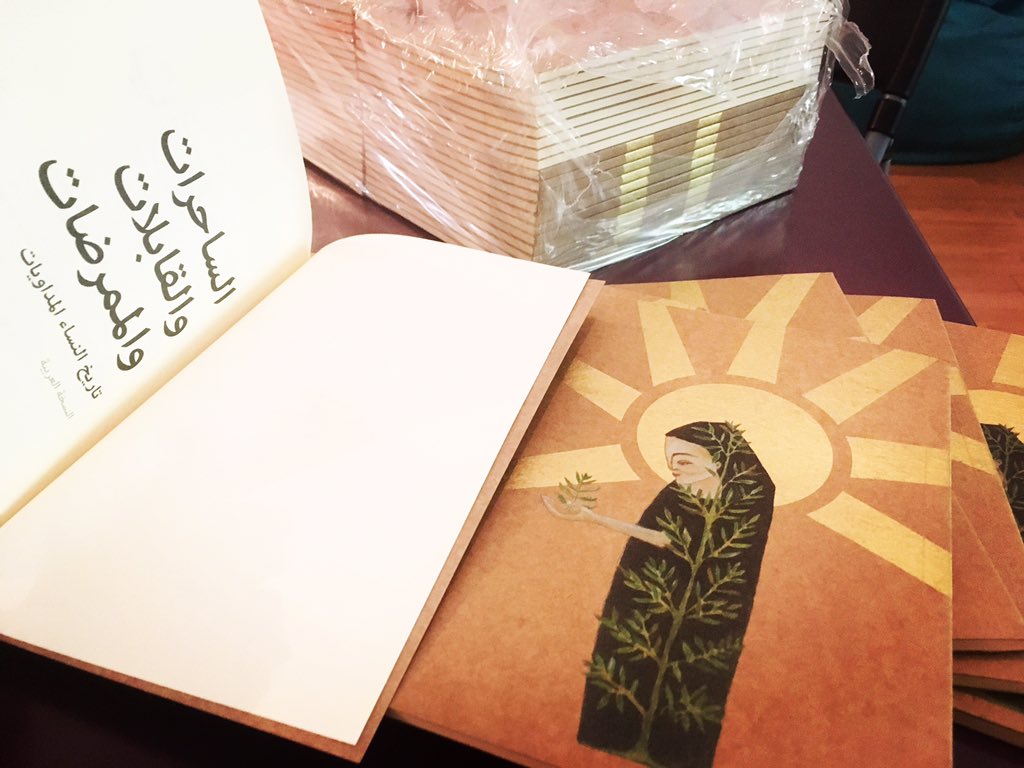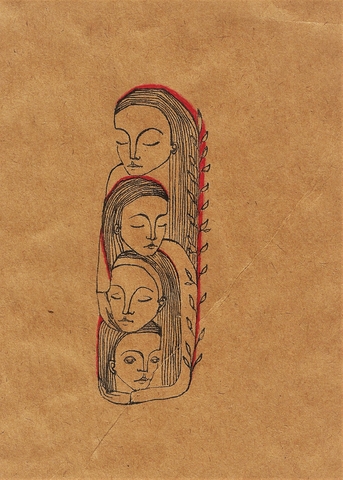Witches, Midwives & Nurses: A History of Women Healers
Preface
Healing is a process. And for as long as I can remember, women around me and far away from me, have been invested in processes; trusting that only sound, patient and protected processes yield desired outcomes. Healing is the process of curing. Cures do not just happen. Nurturing is the process of growth. Cooking is the process that brings upon eats. Listening is the process that makes one feel heard. Asking is the process that makes one feel understood. Cleaning and nesting are the processes that give home and an environment of wellness. These are (some of) our processes. “Feminized work”, they call it. Survivalist work, we call it. The kind that everything depends on to exist, that very little thanks is given to, very few see, and barely any of its time and energy is compensated. Feminized work may just as well be defined as work that is unappreciated, assured, expected, and taken for granted. Where unmarried daughters, “spinsters”, and widows are expected to fulfill their unlived destinies by caring for the family’s sick and elderly. Fathers, or father figures, continue to tell their young daughters that they’re so glad to have had girls because in their old age, daughters will be by their side, while sons are unreliable (read not obliged). Where underpaid and exploited migrant domestic workers spend their youth and adulthood looking after a family that isn’t even theirs, far away from their own.
It was in Ehrenreich and English’s Witches Midwives and Nurses: a History of Women Healers that I first read this gendered glance at healing and curing, but it wasn’t the first time I had seen or experienced it. Formal nursing education is based on the very same medical rationale as physicians’ formal education, yet somehow this knowledge is wrapped in pretty pink packaging called a ‘nursing care-plan’ – reducing the rigorous medical science behind nursing to a sentiment that naturally all women have (irony). It’s not a coincidence that these gendered terms are used to describe our work, and that the work of nurses is undervalued and exploited, just as housework is. After years of studying the science of nursing, a nurse is summed up as either an “angel of mercy” or “half a doctor”; the latter said in all seriousness as the mountaintop of all compliments. I never understood how measuring a full person as half of anyone else could be seen as a compliment. The gendering of healing and curing was read loud and clear in the nursing curriculums we were taught in nursing school, in written nursing policies and practices at work, and in professional and social interactions at hospitals. Doctors cure and nurses assist. Then it was doctors cure and nurses heal back to health. Then with high job turnover rates and great job dissatisfaction, it was still that doctors cure, but they can’t cure without the assisting healing of nurses. Thank you nurses. Happy nurses’ day. That’s not the story though. The story is that nurses cure through the process of healing. Nurses are systematically kept out of large bodies of medical knowledge, held back through not being able to afford the time or the continuing formal education. The institutions of formal education that professionalize healthcare make it so that those of wealth and money have more time to study and learn for years without the burden of providing survivalist work, otherwise known as “feminized work”, at home to their families.
We translated this essential text, while knowing its Euro/American - centric historical context, because our own healthcare systems have adopted and implemented the outcomes of these historical processes. The outcomes being a classist and sexist composition of professional healthcare workers and a capitalist mold of healthcare provision. The processes being the burning of witches, sidelining of women healers, minimization of scope of practice of midwives and nurses, closure of hospitals of the poor and people of color, the delineation and institutionalization of minimum requirements of formal education that effectively kept out women, people of color, and those from a lower class. As you will read in this text, the professionalization of medical doctors introduced new standards of medical practice that increased both academic fees and the minimum years of formal education, that were tailored to the elite few who fit the financial, racial, and gender profile, and thereafter the medical empire we now know, was built on top of it.
Many medical advances have taken place after the formalization of medical education and practice, and many of these advances only became possible because they exploited the very bodies of those primarily excluded from practicing medicine. Unethical medical experiments were primarily tested on the bodies of women, people of color, slaves, queer bodies, poor bodies, natives, immigrants, orphans, and prisoners of war; all intersecting and not necessarily mutually exclusive. We have built our medical and nursing schools, curriculums, and healthcare systems to emulate, glorify, and follow in the footsteps of advances achieved in Europe and the United States of America. But what if we knew that the histories of the systems of health delivery and education were based on histories of oppression and exclusion? Are we then to be surprised that the majority of medical practitioners come from money, influential families, or are men? Would we be surprised to know that the idols of the nursing profession, the lady with the lamp for example, came from an aristocratic family and had initially fought to keep this work unprofessionalized because it is “natural” women’s work that extended from the home, and needs no professionalization and compensation? Should we not then ask why it is that we’re expected to accept these outcomes without the understanding of the political contexts they emerged in and from?
Reading Ehrenreich and English made sense of why the “reality” is what it is. It was a purposeful attack on informal healers, a capitalization of health, and a path paved for the affluent and affluent-to-come to gain more power and legitimacy.
Health and healing is a powerful entry to body politics, to gender politics, to politics of sexuality, to politics of labor, class, race, and migration struggles. We have to admit that the socialization of gender, being geared to male supremacy, benefitting from the subjugation of women, is a stronghold within our society and that it is not absent from the very way we teach healing in either medicine, nursing, or midwifery and the way we practice them. The science of health isn’t as unbiased as we are told and taught to believe; “corrective” surgeries to intersex newborns, exploratory endoscopies to determine the mystical cause of nausea in an unmarried pregnant woman, refusing to perform pelvic exams to unmarried women for fear of hymen breaking, refusing elective sterilization to childless women, dismissing the complaints of menstrual pain or the side effects of hormonal contraceptives to “hypersensitive” and “hysterical” women, electroshock aversion therapy to homosexuals, anal and virginity tests for homosexuals and women, delineating the position, medium, temperature, place and time we birth; whose bodies are these anyway?
This booklet will shed some light on the emergence of this “unbiased” medical science and what it did to women healers. We have much work to do. We cannot go back to how women healers began, and maybe we cannot get redress for the amount of sidelining and exclusions we’ve endured. But we can move forth and challenge these oppressive patriarchal, classist, and racist structures that dictate how, and filter out who, gets to practice medicine, and who does not. Challenging this dominant system from within healthcare, we must address the limitations in the scope of practice of nurses and midwives, and invest in the skills and education of the still existent informal healers, such as traditional birth attendants. We must connect women workers to each other, from the home as a workplace of utterly unpaid work, to the workplace as a place of undervalued work. We must challenge the restrictions women workers face, from discrimination and sexual harassment at work, to limitations in pay and opportunities, and penalizing them for the right to their maternity leave. Women workers, paid and unpaid, need to be involved and lead the way to gender justice within a social movement. Yet again, this is a process to see through. Grassroot feminist movements are invested in processes, we do not want to be dropped into power. On the contrary, we are invested in the process to justice. We don’t want to steal back our justice. We want to own it.

-------
* Preface written by Rola Yasmine
* Booklet cover and thumbnail image artwork by Mirella Salameh
-------
